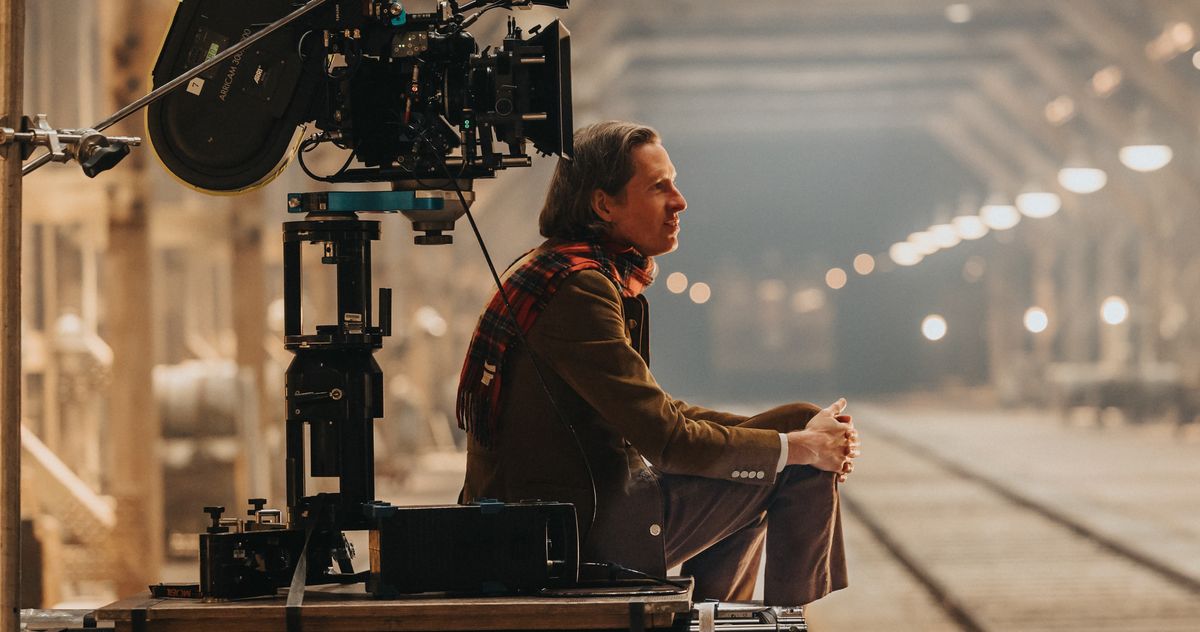Wes Anderson: Exploring The Melancholy Beneath The Whimsy

Welcome to your ultimate source for breaking news, trending updates, and in-depth stories from around the world. Whether it's politics, technology, entertainment, sports, or lifestyle, we bring you real-time updates that keep you informed and ahead of the curve.
Our team works tirelessly to ensure you never miss a moment. From the latest developments in global events to the most talked-about topics on social media, our news platform is designed to deliver accurate and timely information, all in one place.
Stay in the know and join thousands of readers who trust us for reliable, up-to-date content. Explore our expertly curated articles and dive deeper into the stories that matter to you. Visit Best Website now and be part of the conversation. Don't miss out on the headlines that shape our world!
Table of Contents
Wes Anderson: Exploring the Melancholy Beneath the Whimsy
Wes Anderson. The name conjures images of meticulously crafted symmetrical shots, pastel palettes, and quirky characters engaging in wonderfully bizarre adventures. His films are instantly recognizable, a vibrant tapestry woven with meticulous detail and a distinct, almost theatrical, style. But beneath the surface of the whimsical, lies a current of melancholy, a poignant undertone that resonates deeply with audiences. This exploration delves into the melancholic heart beating at the core of Anderson's seemingly cheerful cinematic universe.
A Symphony of Symmetry and Sorrow
Anderson's signature style, often described as "whimsical" or "quirky," is undeniably captivating. The symmetrical compositions, the meticulously chosen color palettes, and the perfectly placed props all contribute to a visually stunning experience. However, this visual perfection often underscores a sense of underlying sadness, a yearning for something lost or unattainable. The characters, while eccentric and charming, are frequently grappling with loss, alienation, and the complexities of human relationships. Think of the fractured family dynamics in The Royal Tenenbaums, the profound loneliness in Moonrise Kingdom, or the lingering sense of regret in The Grand Budapest Hotel.
The Recurring Themes of Loss and Nostalgia
Several recurring themes in Anderson's filmography highlight this melancholic undercurrent. Loss is a central motif, whether it's the loss of innocence (Moonrise Kingdom), the loss of loved ones (The Darjeeling Limited), or the loss of a bygone era (The Grand Budapest Hotel). This loss is often intertwined with nostalgia, a wistful longing for a past that can never be reclaimed. Anderson's films frequently evoke a sense of longing for simpler times, a feeling amplified by his nostalgic use of period settings and classic music.
Characters Defined by Isolation and Yearning
Anderson's characters are rarely simple. They are complex individuals, often isolated and yearning for connection. They may exhibit eccentric behaviors or engage in whimsical pursuits, but beneath the surface lies a deep-seated vulnerability and a profound sense of loneliness. This internal struggle is often expressed through subtle gestures, melancholic glances, and understated dialogue, adding layers of emotional depth to their seemingly quirky personas.
The Power of Visual Storytelling
Anderson’s mastery of visual storytelling is crucial to conveying this blend of whimsy and melancholy. The vibrant colors and symmetrical compositions don't negate the sadness; instead, they highlight it, creating a visual paradox that reflects the complex emotional landscape of his characters. The deliberate framing, the meticulous detail, and the careful pacing all contribute to a cinematic experience that is both aesthetically pleasing and emotionally resonant.
Beyond the Whimsy: A Lasting Impact
Wes Anderson's films are more than just visually stunning pieces of art; they are deeply emotional explorations of human experience. By carefully balancing whimsy and melancholy, he creates a unique cinematic language that resonates with audiences on a profound level. His films invite us to confront our own feelings of loss, nostalgia, and the inherent complexities of human connection. While the visual style may be instantly recognizable, the emotional depth lingers long after the credits roll. And that's perhaps the most powerful aspect of his enduring legacy.
Further Exploration: For a deeper dive into Anderson's work, consider exploring critical analyses of his films, available through academic journals and film websites. You might also enjoy exploring the work of other directors known for their unique visual styles and exploration of complex emotional themes.
What are your thoughts on the melancholic undercurrent in Wes Anderson's films? Share your opinions in the comments below!

Thank you for visiting our website, your trusted source for the latest updates and in-depth coverage on Wes Anderson: Exploring The Melancholy Beneath The Whimsy. We're committed to keeping you informed with timely and accurate information to meet your curiosity and needs.
If you have any questions, suggestions, or feedback, we'd love to hear from you. Your insights are valuable to us and help us improve to serve you better. Feel free to reach out through our contact page.
Don't forget to bookmark our website and check back regularly for the latest headlines and trending topics. See you next time, and thank you for being part of our growing community!
Featured Posts
-
 State Farms Rate Hike Approved What California Drivers Need To Know
May 17, 2025
State Farms Rate Hike Approved What California Drivers Need To Know
May 17, 2025 -
 Condo Owners Lawsuit Highlights Serious Defects In New York City Skyscraper
May 17, 2025
Condo Owners Lawsuit Highlights Serious Defects In New York City Skyscraper
May 17, 2025 -
 Nj Transit Strike Cripples Commuter Rail Leaving Thousands Stranded
May 17, 2025
Nj Transit Strike Cripples Commuter Rail Leaving Thousands Stranded
May 17, 2025 -
 Shocking Findings Rice Sold In Stores Contains High Levels Of Arsenic And Cadmium
May 17, 2025
Shocking Findings Rice Sold In Stores Contains High Levels Of Arsenic And Cadmium
May 17, 2025 -
 Confusion Reigns As Russia And Ukraine Begin Historic Long Awaited Talks
May 17, 2025
Confusion Reigns As Russia And Ukraine Begin Historic Long Awaited Talks
May 17, 2025
Latest Posts
-
 Rome Trip Under Scrutiny State Regulators And Industry Funding
May 18, 2025
Rome Trip Under Scrutiny State Regulators And Industry Funding
May 18, 2025 -
 Los Angeles Angels In Freefall Injuries And Jansens Poor Performance Fuel Basement Ranking
May 18, 2025
Los Angeles Angels In Freefall Injuries And Jansens Poor Performance Fuel Basement Ranking
May 18, 2025 -
 State Farm Insurance Premiums Soar California Approves Rate Hike
May 18, 2025
State Farm Insurance Premiums Soar California Approves Rate Hike
May 18, 2025 -
 Historic Meeting Or False Hope Russia And Ukraines First Direct Talks In Years Analyzed
May 18, 2025
Historic Meeting Or False Hope Russia And Ukraines First Direct Talks In Years Analyzed
May 18, 2025 -
 Cannes In The Before Times Crazy And Fun Photos From A Bygone Era
May 18, 2025
Cannes In The Before Times Crazy And Fun Photos From A Bygone Era
May 18, 2025
